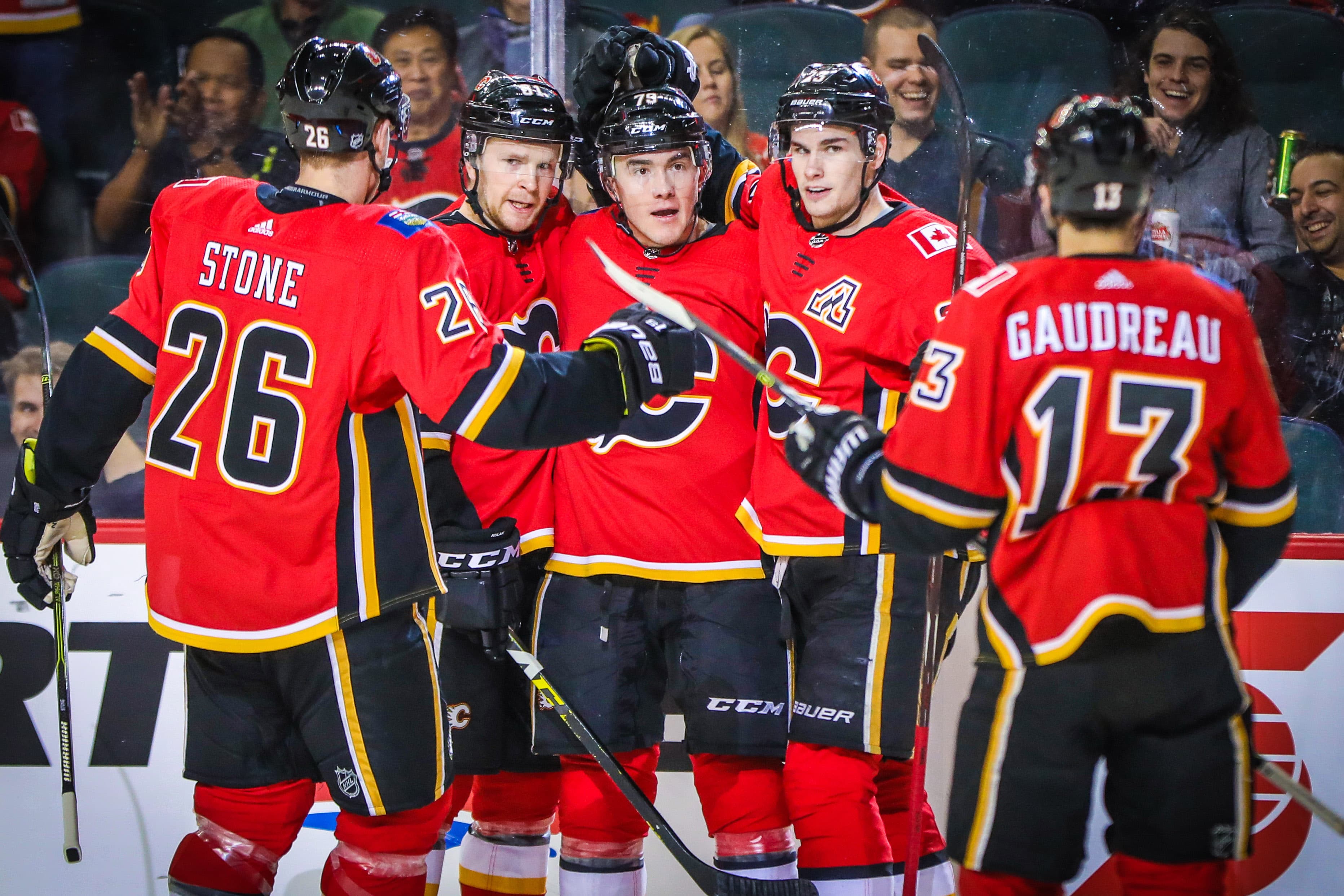Have Flames moves created a developmental gap?

By Ryan Pike
6 years agoIn the current salary cap hockey world, the key to sustainable long-term success is smart drafting and development. Through the National Hockey League’s entry draft or the college free agent market, teams can stock and re-stock their prospect cupboards in the spring and summertime. However, the moves that the Calgary Flames have made in the lead-up to the 2018 trade deadline may have tied their hands in their ability to use either mechanism.
Very few draft picks
Because of all their wheeling and dealing, the Flames are down several draft picks in the 2018 NHL Draft:
- The first round pick was traded to the NY Islanders for Travis Hamonic.
- The second round pick was also traded to the Islanders for Hamonic.
- The third round pick could be headed to Arizona as a condition of the Mike Smith trade – the Coyotes get a 2019 second rounder if the Flames make the playoffs this year or their 2018 third rounder if they miss the playoffs.
- The fifth round pick was traded to Arizona in the Michael Stone trade.
If the Flames make the playoffs, they have five draft picks. If they miss the playoffs, they have four. Either way, the lack of picks in the first two rounds is a major challenge for the team as they attempt to keep their drafting pipeline going.
Not a lot of contract room
If a lack of draft picks is the proverbial rock, a lack of contract room might be the proverbial hard place that’s hindering the Flames on the other side. The club jumped from 46 to 49 active contracts before the trade deadline, adding Cody Goloubef, Chris Stewart and Nick Shore without moving anybody out. That means the Flames can add one more active contract prior to the end of the season.
The challenge here is that without a lot of draft picks, the Flames will probably be reliant on pursuing college free agents in order to top up their prospect pool. But the top college free agents usually want the opportunity to burn a year of their contract right away in order to sign – remember Bryce van Brabant? – and usually the ability to burn a year gets draft college free agents to sign, too. While some college players can be coaxed into signing deals that begin with a amateur tryout stint in the AHL, such as Josh Healey last year and Mark Jankowski the year before, that’s not typical.
The worst of both worlds?
A lack of picks and a lack of contract space isn’t the end of the world, but it really puts an emphasis on the Flames to make their development camp invites count in order to recruit young players on the back end of the usual drafting and development cycle. Life would have been easier for the Flames had they kept a few picks or resisted signing a few players, but ultimately they’ll still be able to find good players – they’ll just need to be a bit more clever about it.
Recent articles from Ryan Pike





